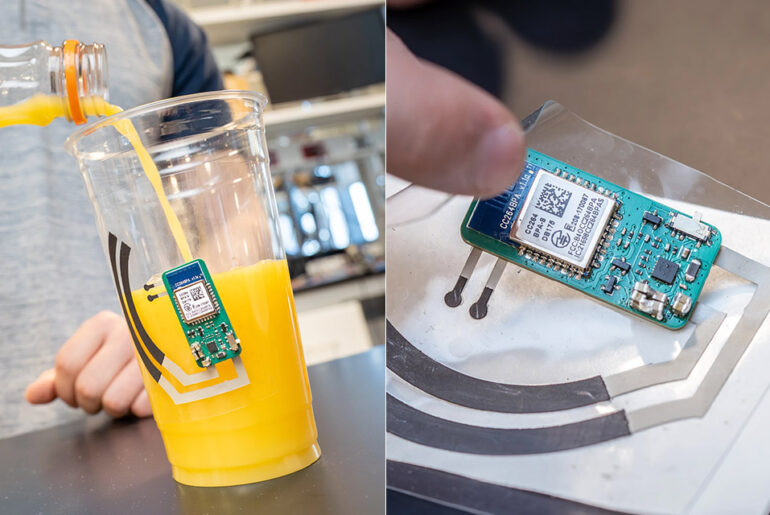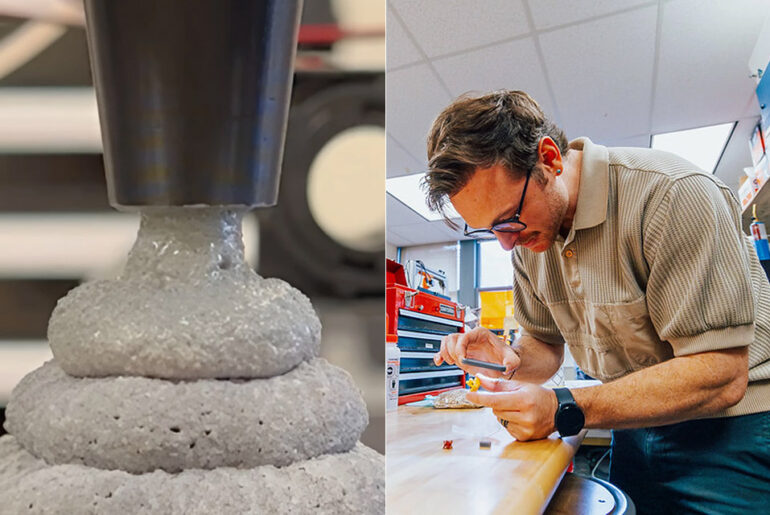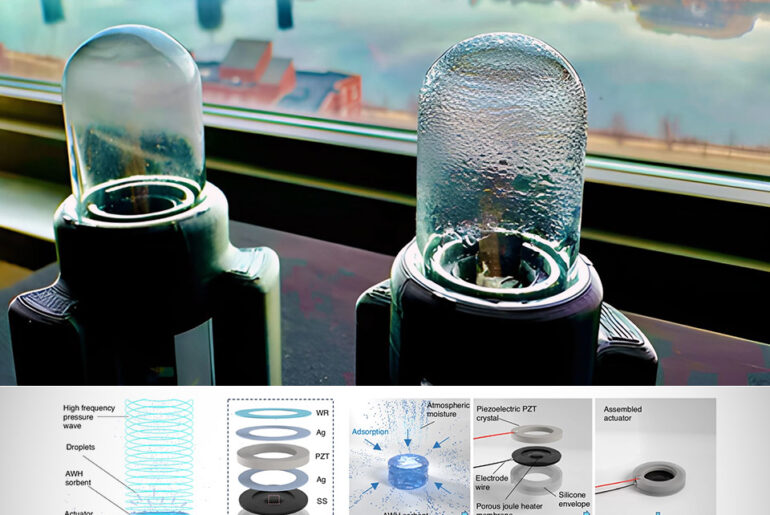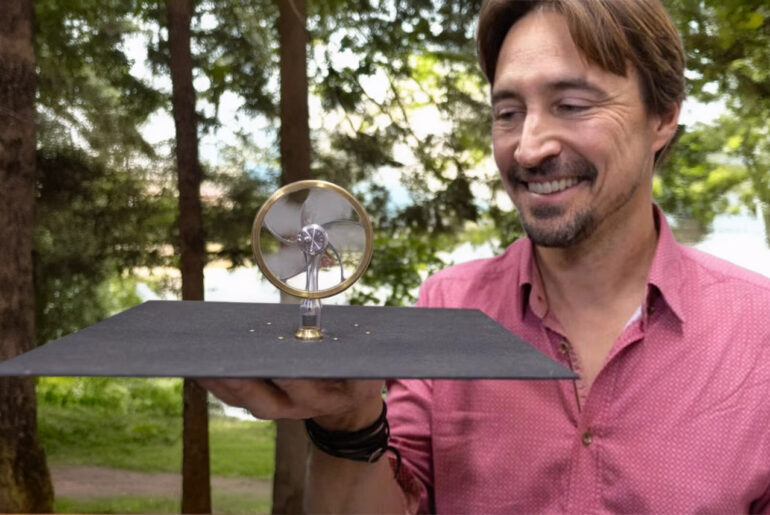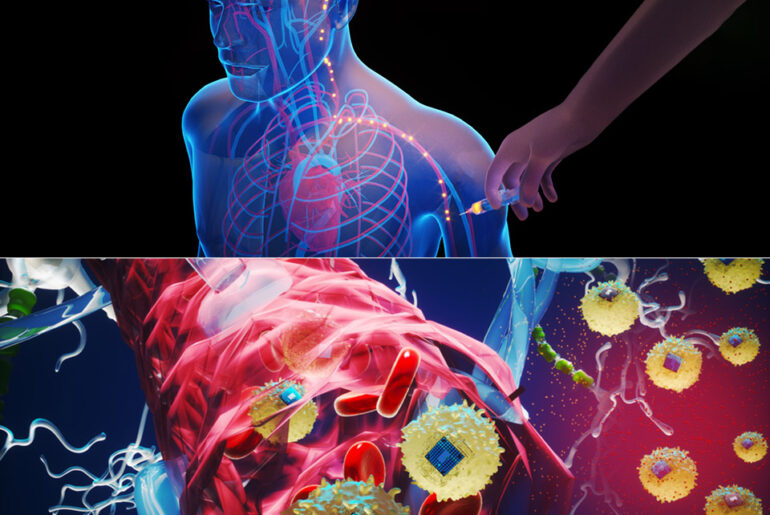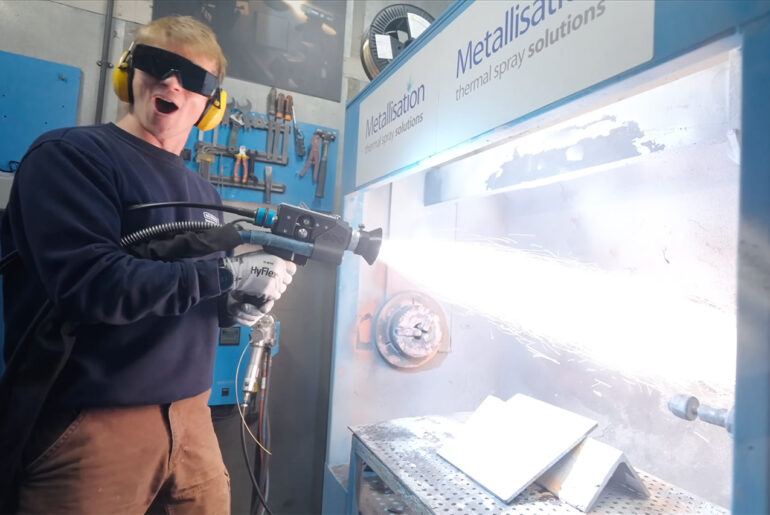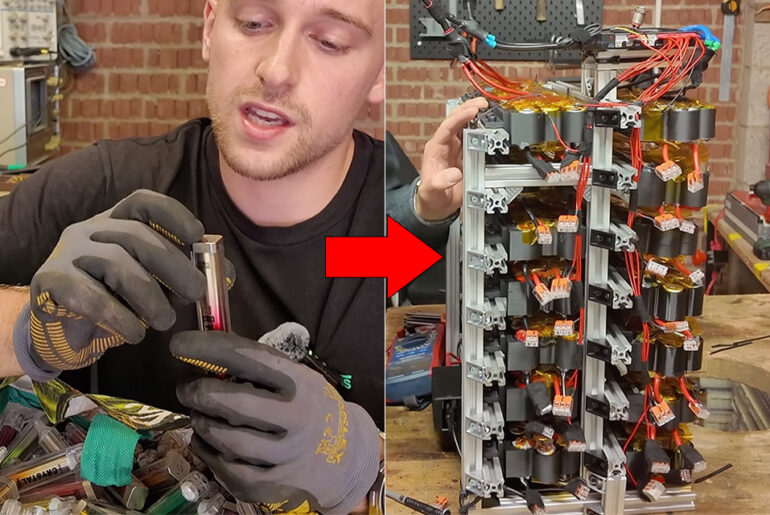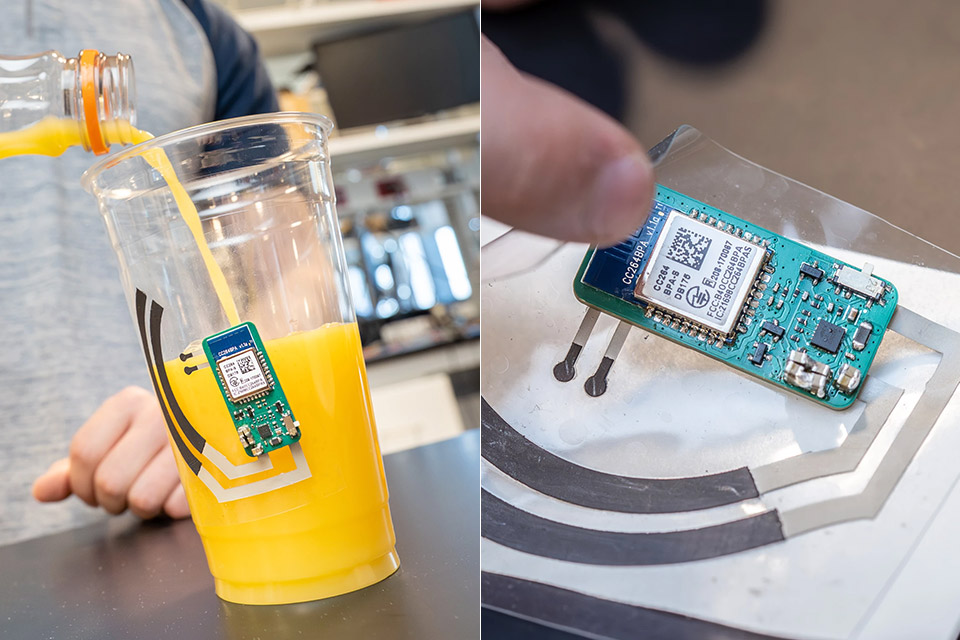
Photo credit: UCSD
Engineers at the University of California, San Diego have created a thin electrical patch, a smart sticker if you will, that attaches to the rim of a coffee mug or water bottle. This turns the whole thing into a health tracker. Grip the cup as usual and it will draw in a small amount of sweat from your fingertips to measure your vitamin C levels.
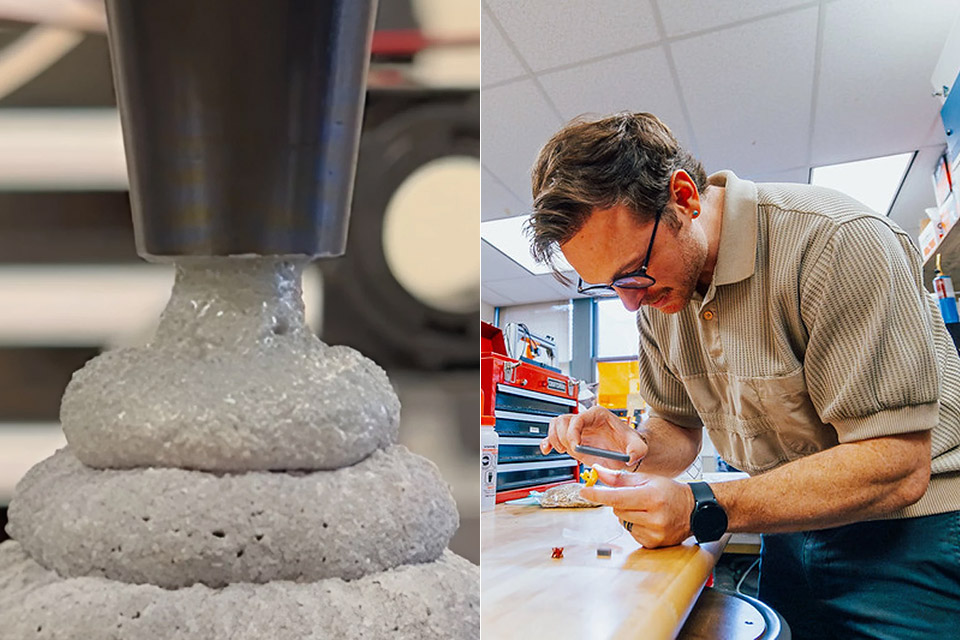
Photo credit: OSU
In the Oregon State University lab, a group of researchers have found a solution to one of the construction industry’s longest-running problems. For years, Devin Roach and his team have been fine-tuning a pretty basic combination of dirt to come up with a material that can be printed into walls right on the spot and stand up on its own without any waiting around. The result is a mix of soil, hemp fibers, sand, and biochar that comes out of a 3D printer’s nozzle and sets almost as fast as the layer touches the air.
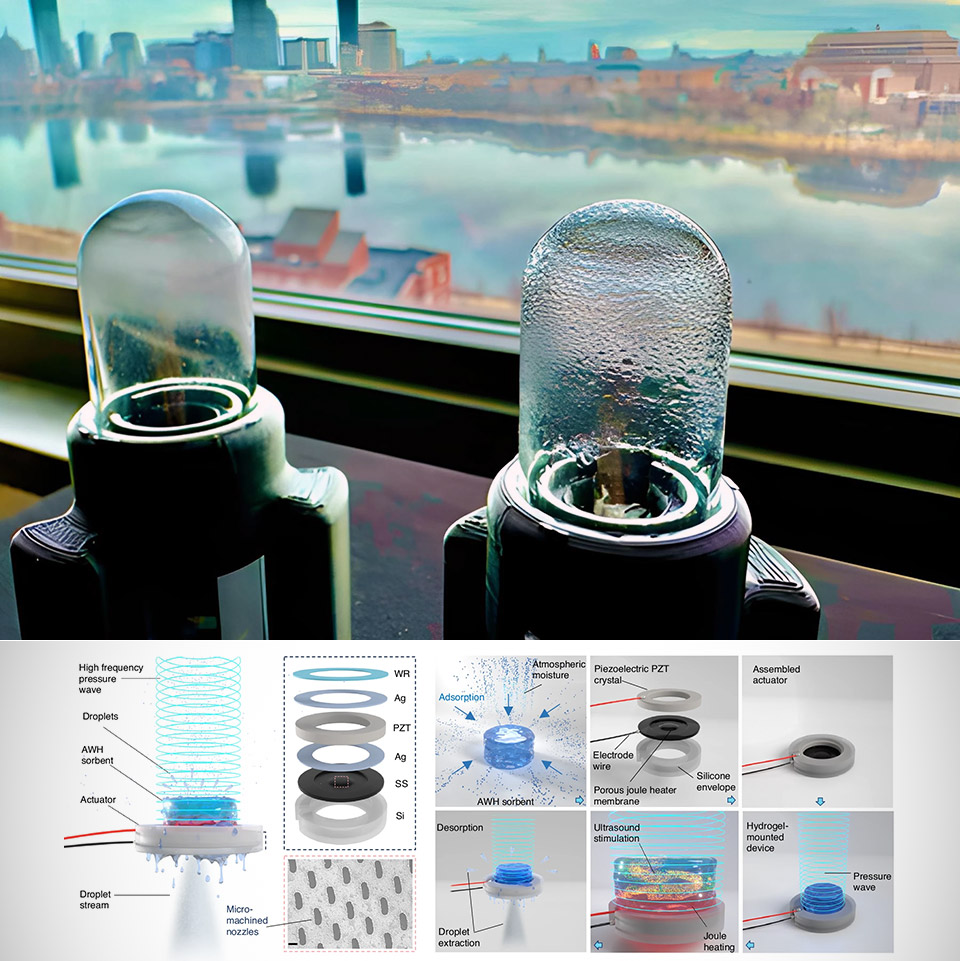
Photo credit: Ikra Iftekhar
Engineers at MIT created a flat device that hums with sound waves too rapid for human ears to detect. These waves rattle water droplets from materials absorbed from the air, converting humidity into a constant stream of clean liquid. In areas where taps run empty and rivers remain far, this system offers a quiet revolution. There are no large factories or endless pipes necessary. Just air, a little vibration, and a few ingenious bits operating in tandem.

Touchscreens today offer crisp pictures, but the experience of running your finger across glass is still a pretty dull affair. Northwestern University engineers have come up with something that might just change that…a wristband-like device that slips over your fingertip and simulates the feel of scratchy fabric or smooth metal on the same screen. They’ve called it VoxeLite, and it makes digital swiping feel a lot more like the real thing.

Photo credit: Veritasum
There is a quiet little corner of precision engineering where the roar of factories and the rumble of particle accelerators is miles away, a place where a tiny, gleaming silicon sphere sits at the center of all attention – the Avogadro Sphere. Made from a single isotope, silicon-28, it measures just under 4 inches across and weighs a precise 1 kilogram.
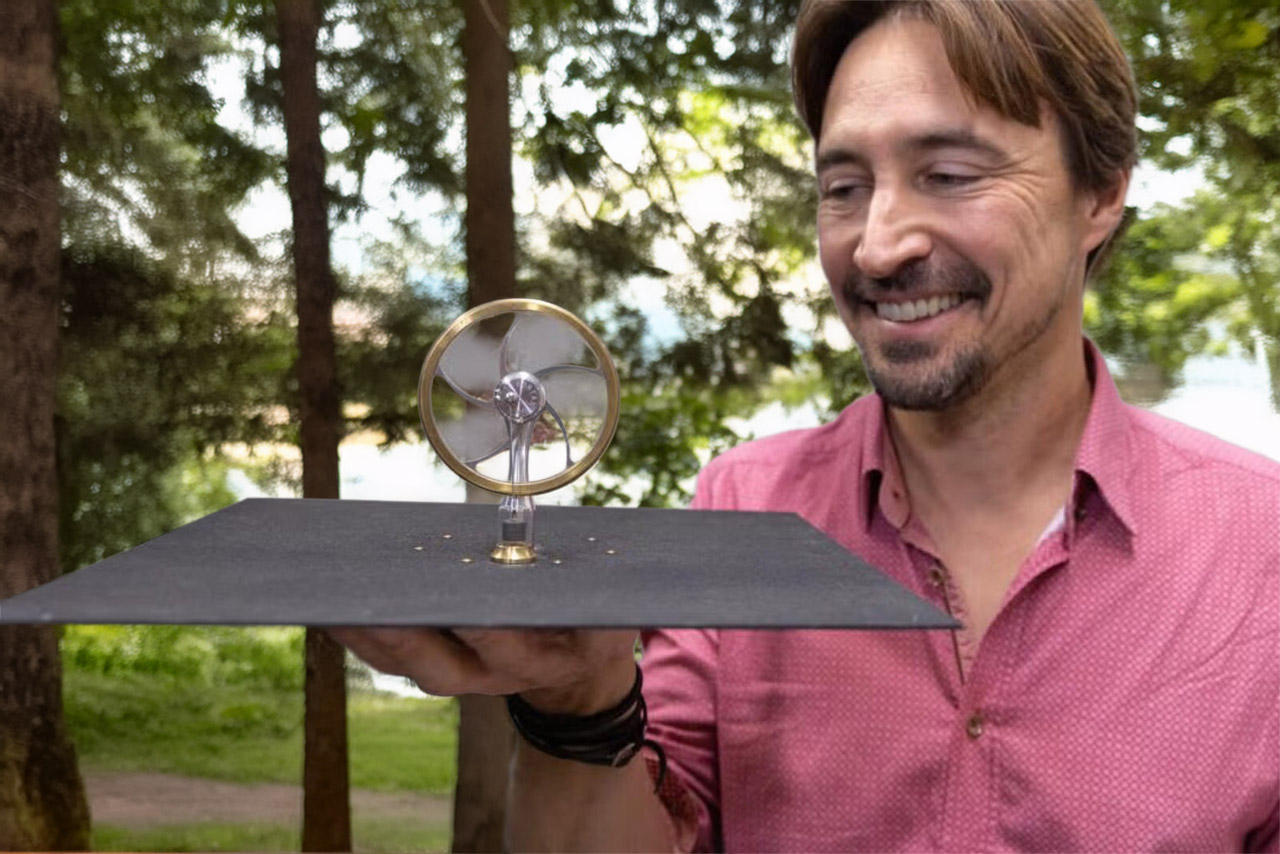
Photo credit: Mario Rodriguez | UC Davis College of Engineering
Engineers at UC Davis, led by Jeremy Munday and his super talented PhD student Tristan Deppe, have come up with a way to harness the power of nighttime darkness and turn it into – wait for it – actual motion. They were working with a pretty basic Stirling engine (one of those engines that generates power by using heat to push mechanical parts around) and took it to the next level, basically.
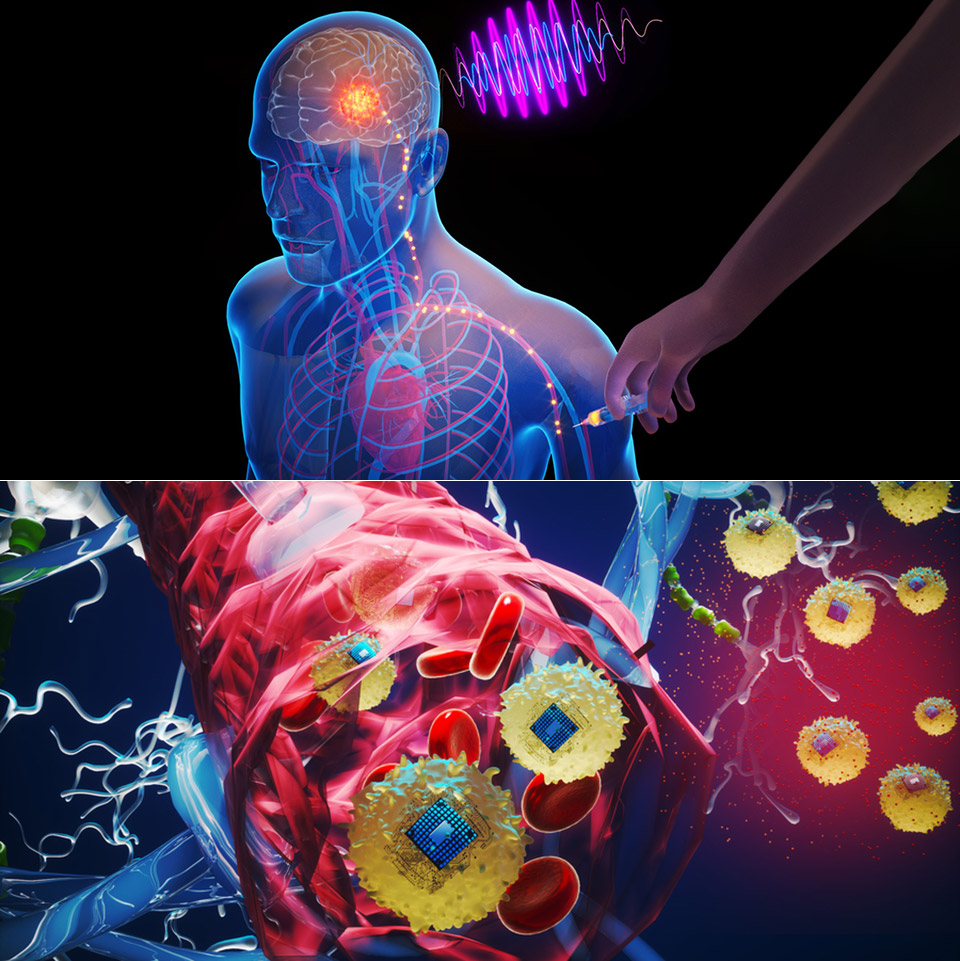
Photo credit: MIT
MIT just changed the game for brain disorders, and the project is called Circulatronics Researchers there created devices so small they can fit on a blood cell, injected them with a simple arm shot and let the body transport them to the brain. Best of all, there are no drills, scalpels or week long hospital stays, required.
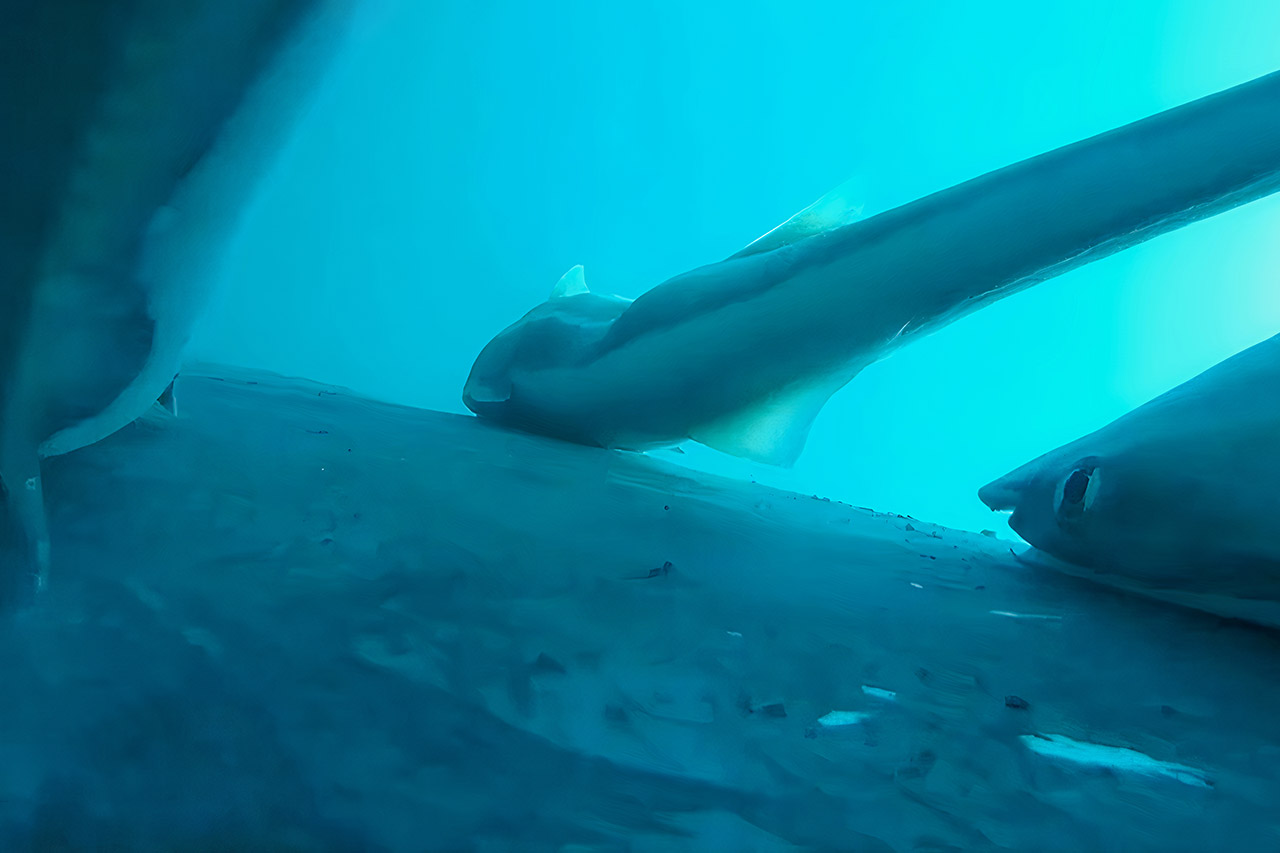
Dr. Olaf Meynecke just wanted to see humpback whales migrate. So, he attached small suction-cup cameras to their backs along Australia’s eastern coast to record feeding patterns and social calls on the long journey from Antarctica to Queensland. Instead, the lenses filled with fish.
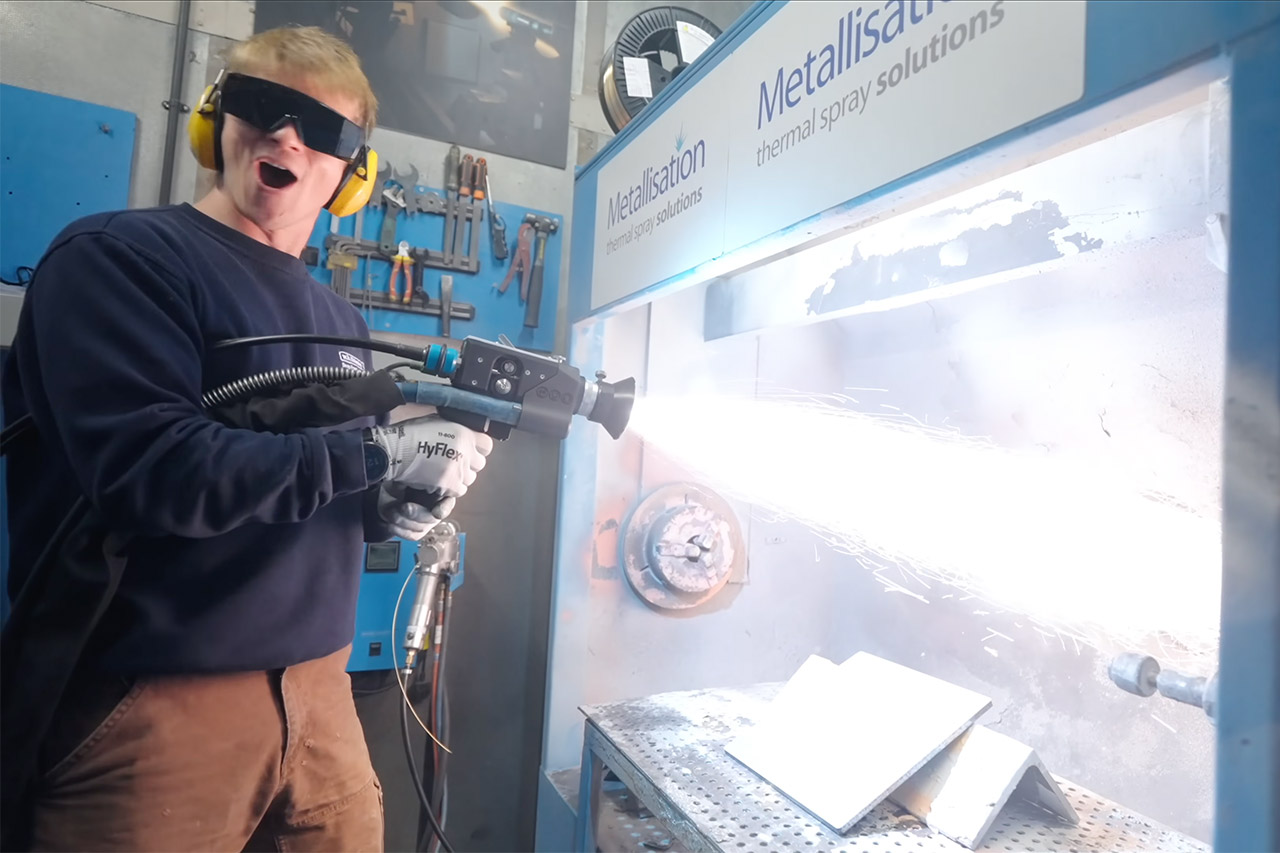
Blacksmith Alec Steele struts out of a narrow Birmingham back-alley and into a century old workshop that reeks of hot pennies and jet fuel. A big metal sign just outside reads Metallisation Ltd. Inside the workshop he’s greeted by workers who hand him a three pound pistol and cost more than his first ute. Give it a squeeze, and out comes a jet of liquid steel blasting out the front at a whack – 600 miles an hour. That’s just the beginning of a day that shows no signs of slowing down.
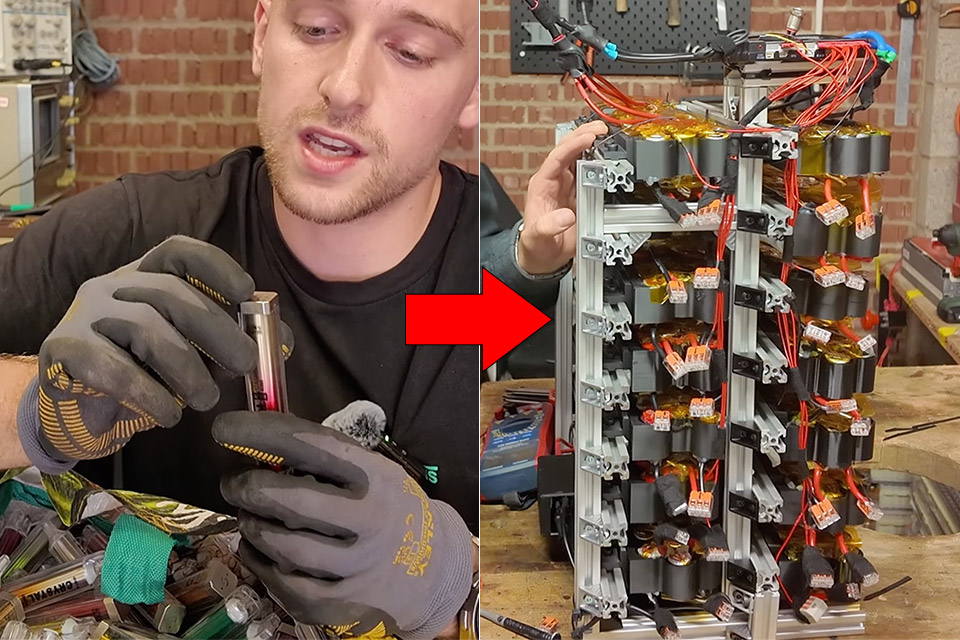
A peaceful workshop in the English countryside has gone off the grid, using the same plastic tubes that end up on every sidewalk – those disposable vapes you see littered all over the place. Chris Doel, a 29-year-old engineer who enjoys getting his hands dirty among the solder fumes and 3D printers, believed the world was throwing away millions of perfectly good batteries simply because. So the guy saved 500 of them, arranged them like soldiers/dolls, and somehow wired them all to a wall, which now powers his kettle, microwave, and editing system.

